Discover the Beautiful Drava River in Koprivnica Križevci County
October 14, 2021 – From thrilling watersports and cycling, brilliant wine and food festivals to wonderful weekend escapes, the epic Drava river in Koprivnica Križevci County is an endless source of fun and inspiration.
Of the many rivers that run through Croatia, five of them could truly be classed as European giants – they stretch for around 300 kilometres or longer. They are Sava (945km), Drava (749km), Kupa (297km), Mura (483km) and Danube (2860km).
These rivers help define Croatia. They dictate the agriculture, activities and cuisine of the Croatian regions they pass through. Furthermore, they often create the very borders of the country.
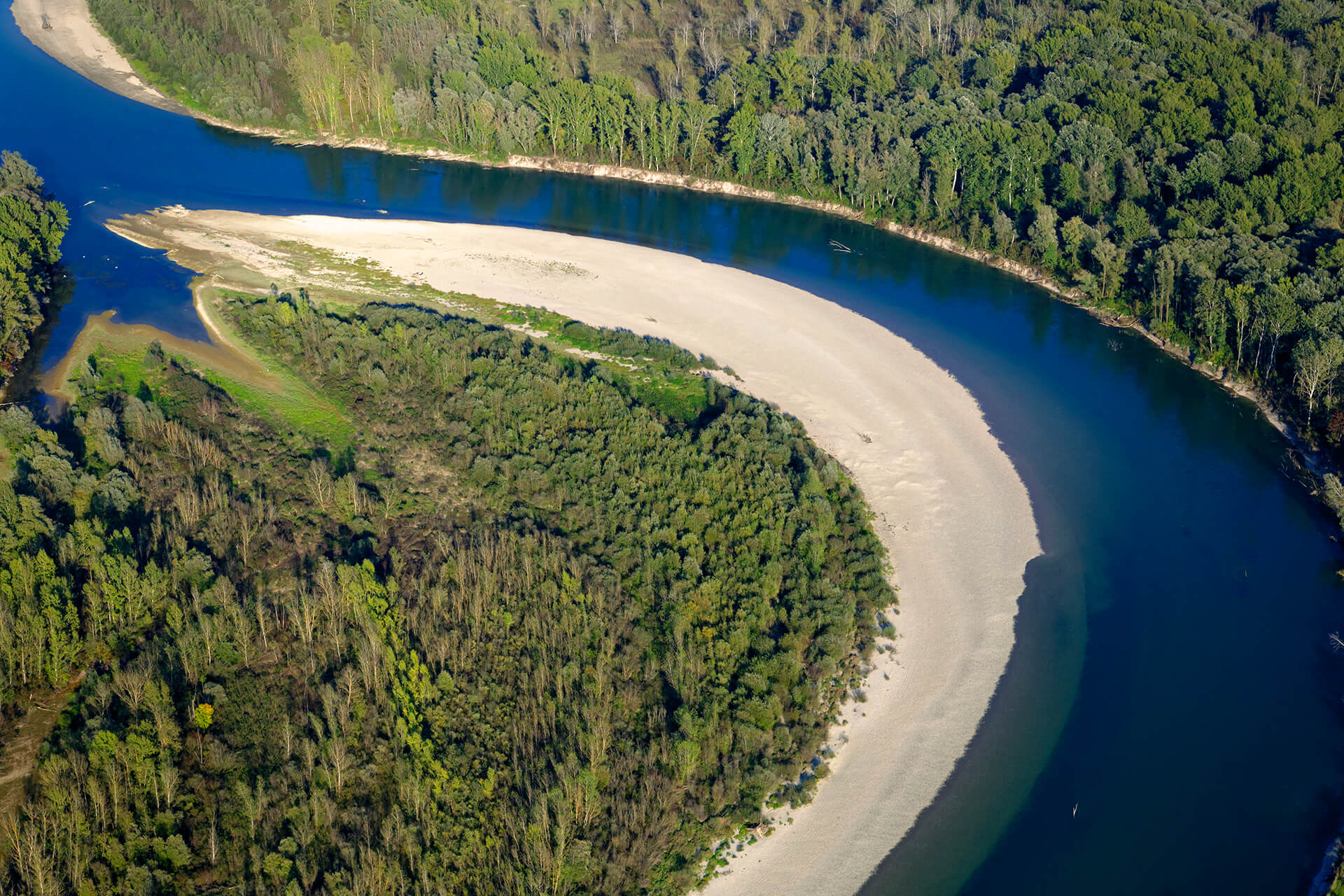 © Goran Šafarek
© Goran Šafarek
Running along the length of the country's most northerly border, the Mur river separates Croatia from Slovenia in the west and Hungary in the east. But, near the Nature Preserve of Veliki Pažut and the historic municipality of Legrad, both in Koprivnica Križevci County, the Mur river gives up its task. Here it flows into the Drava river, becoming its biggest tributary. Thereafter, the Drava continues the job of separating Croatia and Hungary.
The Drava River in Koprivnica Križevci County

By the time the Mur meets the Drava river in Koprivnica Križevci County, the Drava has already travelled more than half of its journey. To get here, it has descended over 1150 metres. Such a long fall has a significant effect on how the river looks and behaves here.
 Traditional wooden fishing boat by the Drava river in Koprivnica Križevci County © Željko Car
Traditional wooden fishing boat by the Drava river in Koprivnica Križevci County © Željko Car
Gone are the violent drops, gushing waterfalls, narrow channels, big boulders and sharp rocks. By now, it has left all that far behind. Instead, the Drava river in Koprivnica Križevci County is an epic, wide expanse of water. On either side, it is bordered by thick, green forests and fields. Its banks are a fine sand, creating beaches on which fishermen and families happily sit all day. This is how the Drava river is here, the perfect natural place for relaxing and recreation.
 Fishermen enjoying summertime on a Drava beach © Mato Zeman
Fishermen enjoying summertime on a Drava beach © Mato Zeman
Recreation, relaxation, activities and unmissable sights on the Drava River in Koprivnica Križevci County
Beaches, birdwatching and boats in Legrad and Veliki Pažut
 From above, part of the Veliki Pažut Special Zoological Reserve at the confluence of the rivers Mur and Drava © Goran Šafarek
From above, part of the Veliki Pažut Special Zoological Reserve at the confluence of the rivers Mur and Drava © Goran Šafarek
Further upstream, people take advantage of the Drava's powerful descent. There, the river is regulated, channelled and harnessed for hydroelectric power. But, where the Drava meets the Mur in Legard, it is wild and unregulated.
 In the mist, the Veliki Pažut Special Zoological Reserve © Goran Šafarek
In the mist, the Veliki Pažut Special Zoological Reserve © Goran Šafarek
This is an ever-changing landscape, right on the border of Međimurje. Here, the rivers are left free to roam. Before 1710, nearby Legrad was actually in Međimurje. But, the Drava changed course and gave Legrad to Podravina. These constantly shifting waterways and floodplains create new habitats and restore existing ones. Subsequently, this is an area of immense biodiversity.
 Two of the colorful residents in the Veliki Pažut Special Zoological Reserve, captured by © Goran Šafarek
Two of the colorful residents in the Veliki Pažut Special Zoological Reserve, captured by © Goran Šafarek
The Veliki Pažut Special Zoological Reserve is 1000 hectares that are specially protected to preserve this biodiversity. Its wetlands and running waters are home to beavers, ducks, coots, waterfowl and reed warblers. In winter, wild geese (spotted goose and hawthorn goose) stay here in large numbers. The deer who wander the surrounding forest are also protected, so long as they stay in Veliki Pažut. You can catch sight of this wildlife and photograph it from the new, specially designated solar-powered boat.

In warmer months, people bring their picnics and barbecues down here to the water's edge. There's a famous beach at the old Legrad-Halasz Csarda resort and nearby a new children's playground.
 Another two residents in the Veliki Pažut Special Zoological Reserve, captured by © Goran Šafarek
Another two residents in the Veliki Pažut Special Zoological Reserve, captured by © Goran Šafarek
You can read more about the visitor offer in Legrad and at the Veliki Pažut Special Zoological Reserve here.
Cycling the Drava river routes
 Cycling by the Drava River in Koprivnica Križevci County © Podravinaprigorjebike.com
Cycling by the Drava River in Koprivnica Križevci County © Podravinaprigorjebike.com
The Drava route is the oldest and most famous bicycle path in Podravina. As its name suggests, it largely follows the course of the Drava river. Although, it veers away from the riverside to take in some of the must-see sights of the county.
 © Podravinaprigorjebike.com
© Podravinaprigorjebike.com
On the 84 kilometre route, you pass through a diverse landscape - fields of golden agriculture, the neat rows of gently descending vineyards and forests that filter the sunlight. From the confluence of the Mura and Drava in Legrad, you drop down past Šoderica lake, before taking in the remarkable village of Hlebine, world-renowned as the centre of an art movement.
 © Podravinaprigorjebike.com
© Podravinaprigorjebike.com
It's not the only historic settlement you meet. The grand city of Koprivnica sits on the route. Its town centre holds several monuments to cycling, so appreciated is the pastime here. Thereafter, traditional rural villages like Podravske Sesvete and Ferdinandovac give a timeless sense of life next to this great river.
Of course, this epic bike path is not the only one in Koprivnica Križevci County (you can see all of the specially designated ones here). Nor is it the only one to pass by the county's special waters.
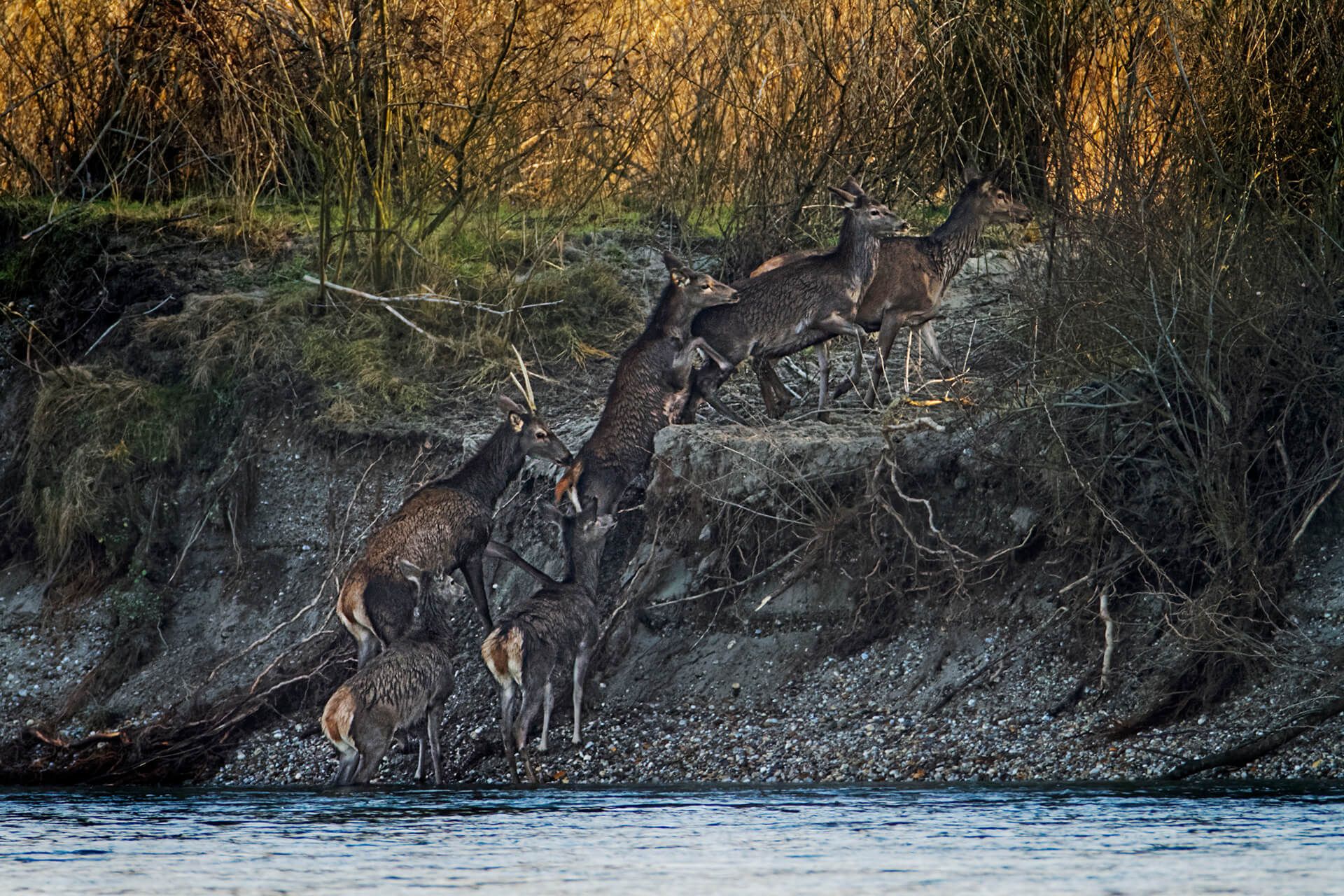 Deer climbing the banks of the Drava, captured by © Goran Šafarek
Deer climbing the banks of the Drava, captured by © Goran Šafarek
At 394 kilometres in length, the D7 bicycle route is incomparable. Starting on the Adriatic sea and ending on Lake Balaton in Hungary, it takes in some of Croatia's greatest water features, including Plitvice Lakes National Park, Lonjsko polje Nature Park and the Drava river in Koprivnica Križevci County. Other highlights it passes in the county are the medieval town of Đurđevac and the village of Gola. From Gola, an alternative bicycle route takes you back along the Drava, then across the river and on to Šoderica lake. The lake is surrounded by new recreational paths perfect for walking, cycling and skating.
Fishing on the Drava river in Koprivnica Križevci County
 In autumn. Fishing on the Drava is enjoyed all year. © Željko Car
In autumn. Fishing on the Drava is enjoyed all year. © Željko Car
Boasting a massive 831,43 hectares of fishing waters, Koprivnica Križevci County is a fisherman's paradise. Carp, catfish, common bream, trout and pike are among the most commonly encountered here. These waters include not only the Drava and the Mura rivers but also more than 20 designated fishing lakes. They're managed by ZŠRK Koprivnica (here), who can also issue permits to any visitors drawn to fish in the spectacular county waters.
 Peaceful seclusion on the Drava © Mato Zeman
Peaceful seclusion on the Drava © Mato Zeman
Camping by the Drava and Šoderica lake
 On a summer day, Šoderica lake © Marc Rowlands
On a summer day, Šoderica lake © Marc Rowlands
Often, the best way to connect with nature is to get up close and stay awhile. Camping by the Drava is great for relaxing and enjoying the surroundings. The Aqua Terra campsite (here) at Šoderica lake is just a couple of hundred metres from the river. There, you're only a few steps from the recreational lake, which is fed underground by the Drava itself.
 Summer fun on the beach at Šoderica lake © Aqua Terra
Summer fun on the beach at Šoderica lake © Aqua Terra
You're not alone on the lakeshore. Since before the 1960s, this has been a favourite place to come. Weekend houses sit back from the shoreline promenade. In warmer months, children's voices carry across the water while they're swimming in Šoderica. In the evenings, young adults congregate at popular bars on the edge of the lake. Music concerts, sports tournaments fill the lake's social calendar.

The camp itself is spread across 20,000 square meters and includes an activities park - with rope bridges through the treetops - and a beach bar. You can find out more about the events and activities on Šoderica lake here.
Hunting in the forests of the Drava
 The river in winter © Mato Zeman
The river in winter © Mato Zeman
The forests that thickly line the banks of the Drava are filled with wildlife. Roe deer, red deer, boar, rabbits and pheasants are just some of the inhabitants. The region's hunters play a vital role in maintaining the habitat of these animals and in keeping track of population numbers. Visitors from several European countries are regularly welcomed to join their activities. Koprivnica-Križevci County Hunting Association can be contacted via local tourist board offices. Alternatively, there are private hunting grounds run by tourism experts KTC (here), who also offer hunting lodge accommodation (here).
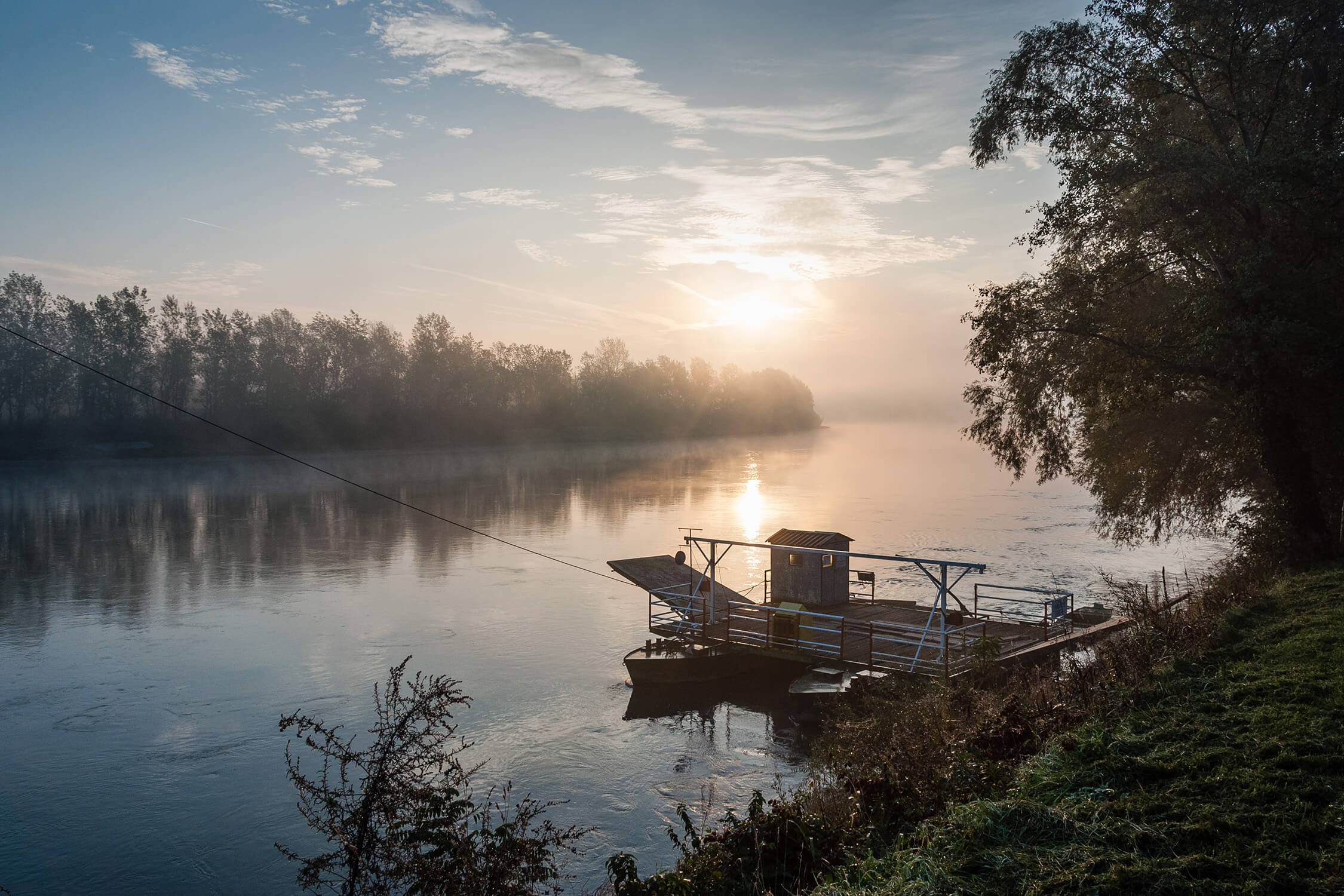 Raft on the Drava © Mato Zeman
Raft on the Drava © Mato Zeman
Wild swimming in Koprivnica Križevci County
 Jumping into the Drava © Mato Zeman
Jumping into the Drava © Mato Zeman
In summer and early autumn, the Drava warms before reaching the county. In some stretches, where the water is deep enough, yet protected from the always strong currents, you can swim in the river. Children jump from rope swings, then plunge into the cooling waters. The river feeds two lakes which are also popular places for summer swimming; Šoderica near Legrad and Đelekovec and the Čingi lingi lake, which lies between the villages of Repaš and Molve.
 From above, Čingi lingi lake © Goran Šafarek
From above, Čingi lingi lake © Goran Šafarek
Rafting, kayaking, canoeing and boat trips on the Drava river
 This giant river is full and wide, even in summer © Željko Car
This giant river is full and wide, even in summer © Željko Car
Many of Croatia's rivers are too dry in summer to support activities. Not the Drava. This giant flows thick and fast even during peak summertime. A great way to enjoy the natural surroundings is from atop the water itself. A whole new perspective of the riverside banks and forests opens up from a canoe or kayak. Gliding silently through the landscape allows it to unfold. For a more thrilling experience, take to the Drava by motorboat or wild rafting.
 Canoeing through an epic landscape © Željko Car
Canoeing through an epic landscape © Željko Car
You can go rafting with Rafting Club Koprivnica (here) or with Etno Kuce Karlovcan (here). Karlovcan also offer motorboat excursions and accommodate larger parties on river tours. You can find out more from the Tourist Board of Dravski Peski (link below).
Food and drink from the Drava river and its fields

At the annual outdoor cook-off Fišijada Ferdinandovac, you could well imagine being further down the Drava in the region of Slavonia. The fried fish and the deep red, paprika-rich fish stews here are classics of Slavonia. And they're favourites here too. The carp and catfish are pulled from the same river, the paprika a long embraced influence from Hungary on the other side.
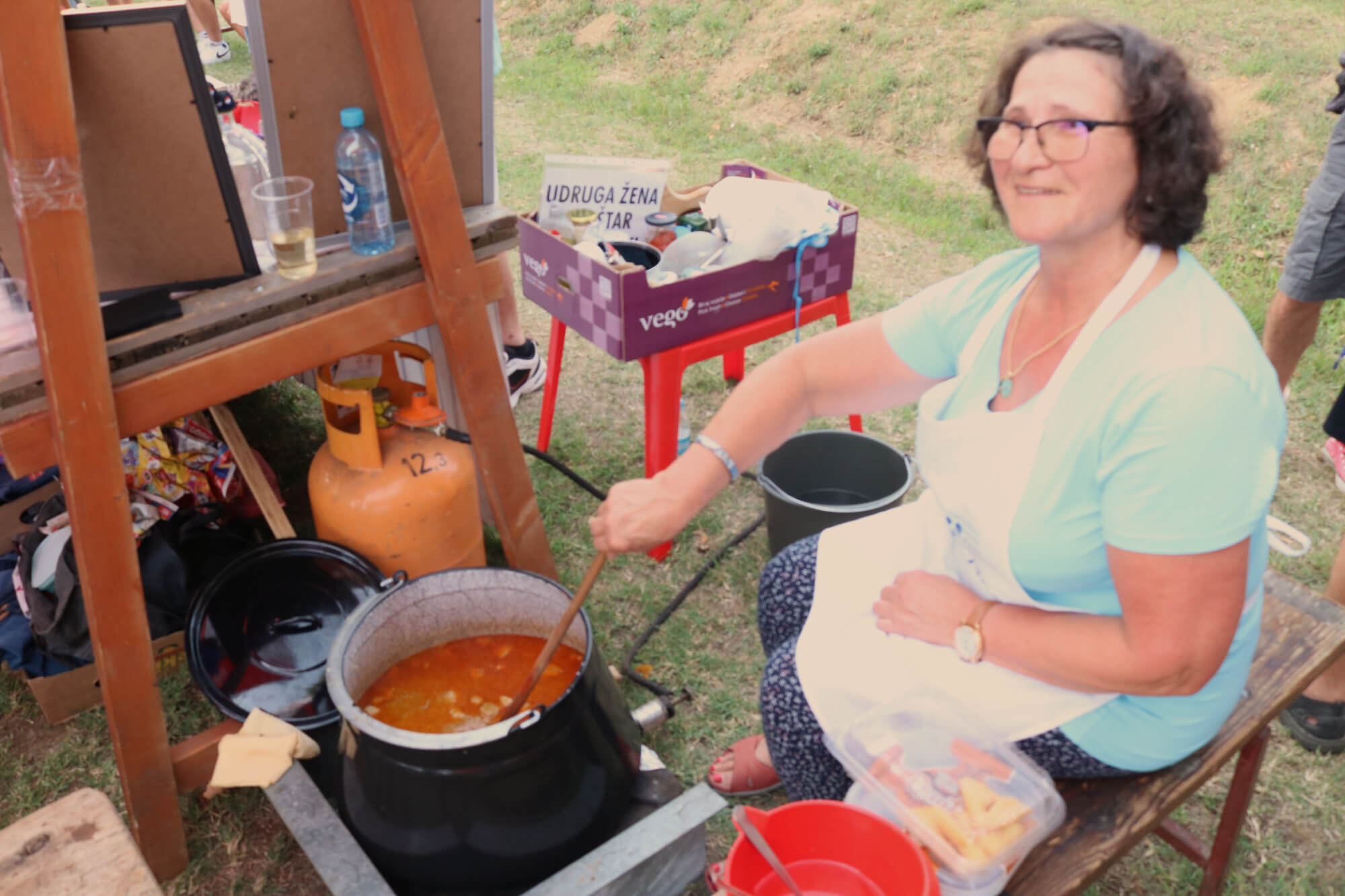 Making gulash in competition at Rokovo in Kozarevac © Marc Rowlands
Making gulash in competition at Rokovo in Kozarevac © Marc Rowlands
But, you'd be wrong to think that Podravina cuisine is an exact match of Slavonia's. Koprivnica-Križevci County has its own distinct recipes, ingredients and flavours. Wild mushrooms, plucked from the forests and fields by the Drava, can be found alongside barley in a classic local soup. It's delicious.
 The all-organic vines of Vinarija Šipek in Kloštar Podravski, Koprivnica-Križevci County © Marc Rowlands
The all-organic vines of Vinarija Šipek in Kloštar Podravski, Koprivnica-Križevci County © Marc Rowlands
Koprivnica-Križevci County also has exemplary wines. You'll find superb whites like Riesling, Chardonnay, Grasevina, Sauvignon blanc and more here. They thrive in sandy soil. It has been deposited in the fields here over millennia by the Drava. Vinarija Šipek in Kloštar Podravski (here) run an all-organic winery with excellent wines and heritage grapes. Vinarija Kostanjevec in Lukovec (here) are decorated internationally. In 2020, their Premium Riesling won Silver at the Decanter World Wine Awards. But, there are many more great winemakers all across the county.
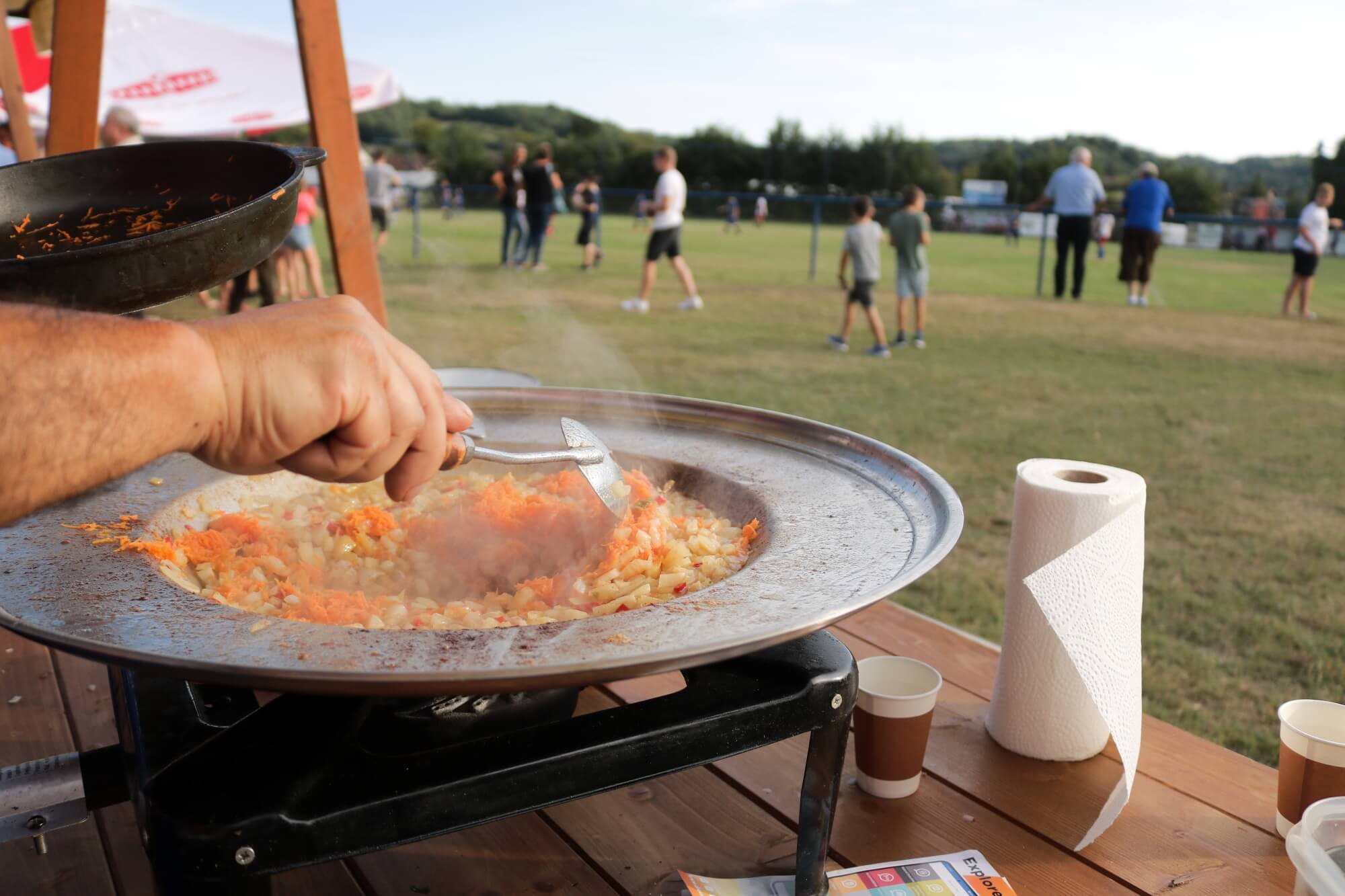
In this part of Podravina, celebrating the fine local food and drink is a regular part of the culture. Every village has at least one notable event. Often held outdoors, they are great social occasions and a good excuse to visit a neighbouring place. More often than not, a sports match, music concert or a funfair runs in tandem. If you want to try the river fish dishes of Podravina, restaurant Ribička hiža near Đurđevac (here) serves these specialities year-round.

Staying by the Drava river
 From above, Dravski raj on the Drava River in Koprivnica Križevci County © Toni Fereža/FT STUDIO
From above, Dravski raj on the Drava River in Koprivnica Križevci County © Toni Fereža/FT STUDIO
You can find great traditional accommodation across all of Koprivnica-Križevci County. And, if you want to stay right next to the Drava, there are some super options.

Dravski raj (here) is a delightful renovated farm complex that backs onto the Drava. Inside traditional buildings, you'll find modern bedrooms, a games room, hot tub and free bicycles for exploring the surrounding nature. You can draw your own water from the well to drink – or just take it from the tap, of course.
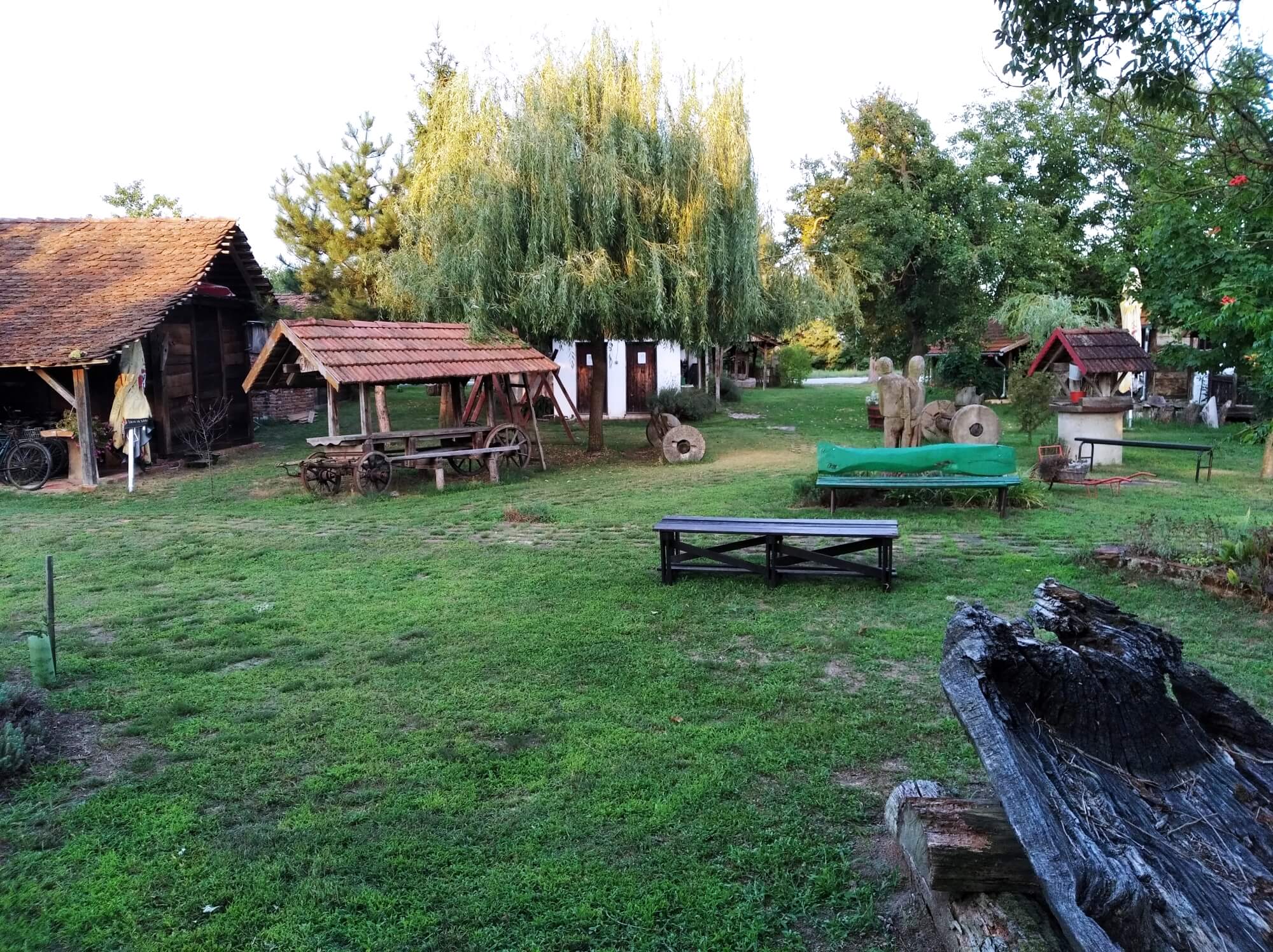 Perfect for events and relaxing, the sprawling grounds of Etno kuce Karlovcan © Marc Rowlands
Perfect for events and relaxing, the sprawling grounds of Etno kuce Karlovcan © Marc Rowlands
Etno kuce Karlovcan (here) is a large plot containing artefacts of regional agriculture and life from the last few hundred years. Longstanding stakeholders in tourism on the Drava, they offer food, accommodation, boat rides, rafting and horse riding too.
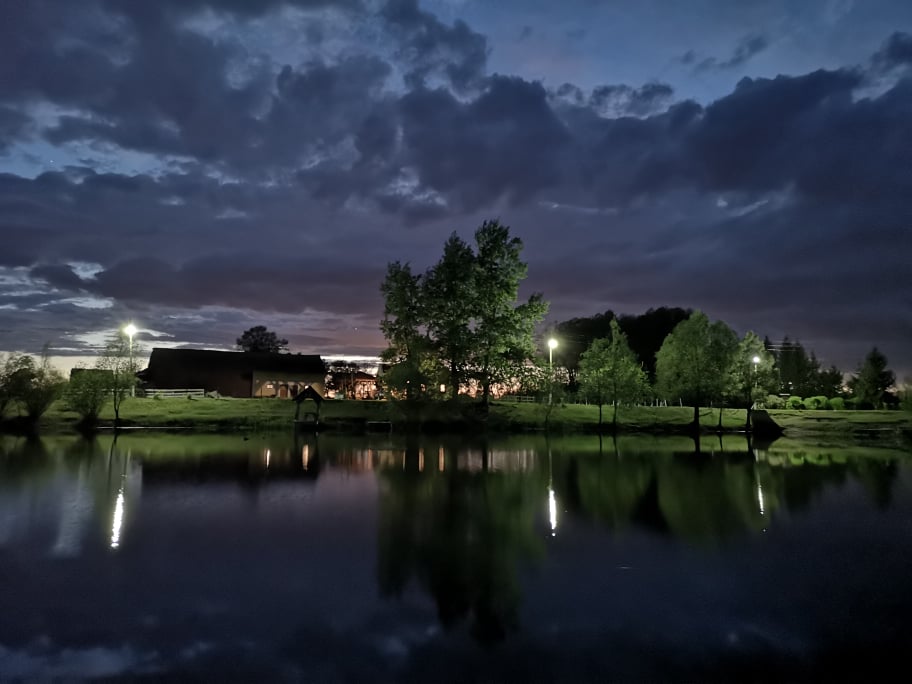 From the water, Country House Ivančan © Domagoj Krznarić
From the water, Country House Ivančan © Domagoj Krznarić
Art centar Ješkovo have robinson accommodation near Ješkovo. Also, Country House Ivančan (here) is perfect for a riverside getaway. The family enterprise is also famed for the food they prepare.
This article was produced with the co-operation of Koprivnica-Križevci County Tourist Board. Both the author and Total Croatia News would like to sincerely thank Željko Car, Mato Zeman and Goran Šafarek for the kind permission to use their photography here.
If you would like more information about any of the mentioned events, activities or county cycle routes, you can contact Koprivnica-Križevci County's tourist boards on these links.
Koprivnica town tourist board here
Križevci tourist board here
Đurđevac tourist board here
Central Podravina tourist board here
Tourist board of Dravski Peski here
Kalnik tourist board here
Foreigners Self-Isolating in Croatia: Do You Feel Safer? Philip from UK in Ferdinandovac
April 8, 2020 - Do foreigners in Croatia feel more or less safe sitting out COVID-19 here than in their home country, and what are their experiences? A new series on Total Croatia News, with Philip Riley from the UK in Ferdinandovac as the 34th contributor.
Oxford University recently published some research on government responses to coronavirus which showed that Croatia currently has the strictest measures in the world. While inconvenient, this is a good thing in terms of reducing the spread of the virus, and I am certainly not alone in my admiration of the official Croatian handling of this crisis in recent weeks, both in terms of action and communication.
But what do other expats here think? And how does it compare with the response in their home country? Would they rather sit this one out here or there? A new series on TCN, we will be featuring expats from all over the world to see what their views are on life in corona Croatia rather than back home. So far we have heard from expats in Croatia from Romania, USA, Ireland, UK, Mexico, Argentina, Spain, Singapore, Holland, Canada, India, Hong Kong, Venezuela, Latvia, China, Honduras, Hungary, Moldova, South Korea, Japan, the Philippines and Germany. Next up, Philip Riley from the UK in Ferdinandovac.
If you would like to contribute to this series, full details are below this interview.
My name is Philip Riley and I am from the Coventry area but lived in Scotland before I moved to Hungary in 2010. I still have my small cottage in the Moray area of Scotland but it is rented out and that provides me with a small income to enable me to live in Croatia. I moved from Hungary to Croatia after failing dismally at learning Hungarian. Although my Croatian is also minimal I am less isolated here because more people can speak English.

Firstly, how are you? Are you alone/with someone? Tell us a little about your situation and sanity levels.
My health is OK apart from hayfever, something I have suffered for most of my life at this time of year. I am retired and live alone in a small village near Ferdinandovac with my little dog, Dennis. I am doing much the same as normal, mainly gardening and house renovations. So far the only real frustration was that I could not meet with friends to celebrate my 60th birthday.
When did you realise that corona was going to be a big issue?
At first I thought it would be like Ebola and other recent diseases, which were better contained and did not cause widespread disruption. I am in Facebook groups for Croatia and Hungary and have seen the situation unfold through the many threads discussing the virus and measures taken to control the situation.
What is your impression of the way Croatia is dealing with the crisis? How safe do you feel?
Initially I felt that Croatia was taking things too far and it was a case of politicians who want to make names for themselves but my opinion has changed and I now grasp the enormity of the threat. I feel fairly safe from the virus itself but the long term economic and social damage is hard to predict at this stage. My income, like that of many others, could dry up as a result of these economic consequences.
Now compare that to your home country and how they are handling it. What is Croatia doing better/worse?
I am from UK and have a very low opinion of the current UK government. They appear to be doing too little, too late and as a result it seems likely that many thousands of people will die. The health service has been underfunded for years and will simply be overwhelmed by the numbers. The UK has a much higher population density than Croatia anyway, so things like social distancing are more difficult to implement. Most public transport is still running and is one of the main ways people are likely to be too closely grouped together.
What about official communications from the authorities, compared to your home country?
I have been relying on Total Croatia news for English translations of government press releases etc. and they have been doing a fantastic job! My Croatian is very limited but so many people I meet speak English that I have been able to do what they ask in supermarkets etc. Again I have not been impressed by the UK government in terms of being kept informed. A few months ago I registered with the UK government for email updates regarding Brexit and any consequent actions required of UK expats living in EU countries. I thought they would use this email mailing list to send us information about the virus control restrictions but nothing so far!
What's the one thing you wish you had taken with you into self-isolation.
That is a difficult question but I used to live in Hungary and still go there to do shopping sometimes. I can't cross the border now so I wish I had stocked up on a few jars of Lecsó.
One thing you have learned about yourself, and one thing you have learned about others during this crisis.
My income is low and I live quite frugally. This means I don't go out and about very much at the best of times, so the restrictions affect me less than they would many other people. Having said that, it is always good to know that you have freedom, even if you don't do much with it! Having such freedom curtailed is frustrating me more than I would have expected.
Something positive that has come from this crisis is that people are contacting each other more, even if it can only be by email or phone. I have heard from several old friends who would rarely contact me in normal times, I suppose they are usually too busy. Most people seem to be staying calm and getting on with what they have to do. My mother used to tell me about life during World War Two, with bombing, air raid shelters, rationing etc. In some ways that crisis brought out the best in people and I can see something similar now. People are starting to appreciate that having each other is more important than personal wealth, material possessions etc.
Thanks, Philip. Stay safe and see you on the other side.
TCN is starting a new feature series on foreign experiences of sitting out COVID-19 here in Croatia compared to their home country. If you would like to contribute, the questions are below. Please also include a para about yourself and where you are from, and a link to your website if you would like. Please also send 3-4 photos minimum to This email address is being protected from spambots. You need JavaScript enabled to view it. Subject Corona Foreigner
If you would be interested to record a video version for our partners www.rplus.video please let us know in the email. Thanks and stay safe.
Foreigners Self-Isolating in Croatia: Do You Feel Safer Than in Your Home Country?
Firstly, how are you? Are you alone/with someone? Tell us a little about your situation and sanity levels.
What do you think about the economic measures the government is taking, are they helping your business? (PLEASE IGNORE IF THIS DOES NOT AFFECT YOU)
When did you realise that corona was going to be a big issue?
What is your impression of the way Croatia is dealing with the crisis? How safe do you feel?
Now compare that to your home country and how they are handling it. What is Croatia doing better/worse?
What about official communications from the authorities, compared to your home country?
What's the one thing you wish you had taken with you into self-isolation.
One thing you have learned about yourself, and one thing you have learned about others during this crisis.
TCN has recently become a partner in Robert Tomic Zuber's new R+ video channel, initially telling stories about corona experiences. You can see the first TCN contribution from this morning, my video from Jelsa talking about the realities of running a news portal in the corona era below. If you would like to also submit a video interview, please find Robert's guidelines below
VIDEO RECORDING GUIDE
The video footage should be recorded so that the cell phone is turned horizontally (landscape mode).
There are several rules for television and video news:- length is not a virtue- a picture speaks more than a thousand words
In short, this would mean that your story should not last more than 90 seconds and that everything you say in the report should be shown by video (for example, if you talk about empty streets, we should see those empty streets, etc.).
How to do it with your cell phone? First, use a selfie camera to record yourself telling your story for about a minute and a half. Ideally, it would be taken in the exterior, except in situations where you are reporting on things in the interior (quarantine, hospital, self-isolation, etc.). Also, when shooting, move freely, make sure everything is not static.
After you have recorded your report, you should capture footage that will tell your story with a picture, such as an earlier example with empty streets.
One of the basic rules of TV journalism is that the story is told in the same way as a journalist with his text. Therefore, we ask you for additional effort. Because we work in a very specific situation, sometimes you may not be able to capture footage for each sentence of the report. In this case, record the details on the streets: people walking, the main features of the city where you live, inscriptions on the windows related to the virus, etc.
The same rules apply if you are shooting a story from your apartment, self-isolation, quarantine. We also need you to capture footage that describes your story.
When shooting frames to cover your reports, it is important that you change the angle of the shot (in other words, shoot that empty street from several angles). Also, when shooting a detail, count at least five seconds before removing the camera to another detail.
The material should be about 5 minutes long (90 seconds of your report + frames to cover your story).
After recording everything, send us to Zagreb, preferably via WeTransfer to This email address is being protected from spambots. You need JavaScript enabled to view it.




